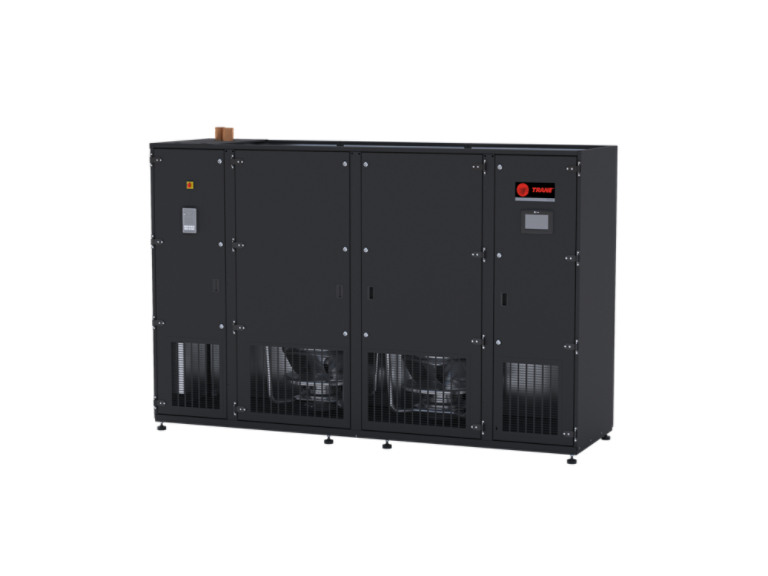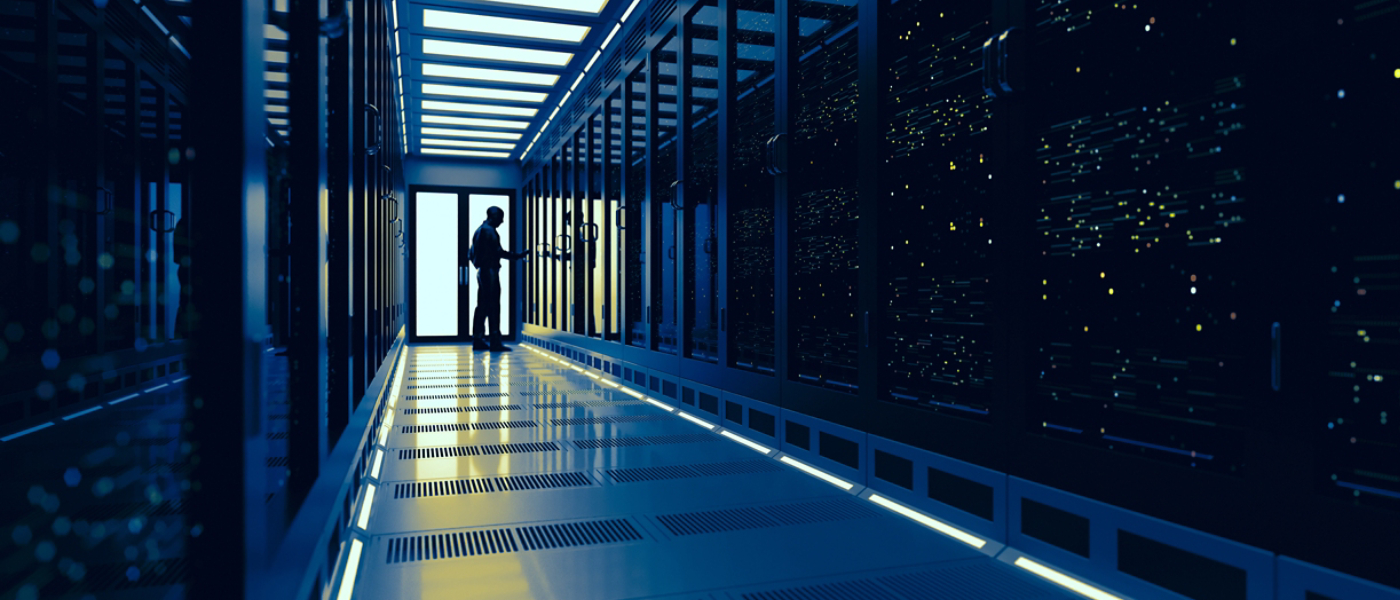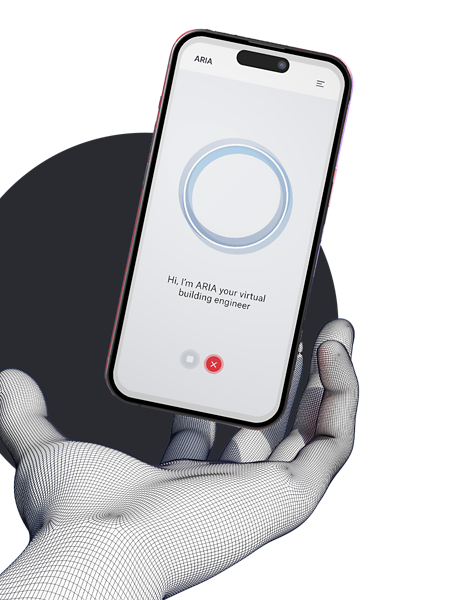- Overheating and Downtime: Preventing overheating to ensure continuous operation of critical IT infrastructure.
- Energy Efficiency: Reducing power consumption to lower operational costs and carbon footprint.
- Scalability: Meeting the cooling needs of expanding data centers.
- Regulatory Compliance: Adhering to environmental regulations and industry standards.
- Performance Optimization: Ensuring peak efficiency and reliability through advanced cooling technologies.
Computer Room Air Handler for Data Centers
Model VCDC

Overview
A CRAH is a critical component in data center cooling infrastructure.
- Cooling Capacity: 50kW to 300kW to support varied density zones
- Deployment Flexibility: Downflow design with optional upflow to match evolving white space & electrical room strategies
- Compact Design: Designed for high-capacity delivery with reduced floor space impact
- Space-Conscious Service Access: Front-only service design ideal for tight corridors or slab deployments
- Controls: Factory-installed Symbio® controls
- Energy Efficiency: Advanced thermal enclosure design minimizes energy loss and maximizes cooling efficiency
-
Superior Performance and Temperature Control
CRAHs help regulate the temperature within the data center by removing heat generated by servers and other equipment. This is essential to prevent overheating, which can lead to equipment failure and data loss.
-
Energy Efficiency and Sustainability
Modern CRAH units are designed to be energy-efficient, reducing the overall power consumption of the data center. This is important for both cost management and environmental sustainability.
-
Scalability and Flexibility
CRAHs can be scaled to meet the cooling needs of data centers of various sizes. As data centers grow and add more equipment, additional CRAH units can be integrated to handle the increased cooling load.
-
Redundancy and Reliability
CRAHs are often part of a redundant cooling system, ensuring that if one unit fails, others can take over to maintain the necessary environmental conditions. This redundancy is crucial for maintaining uptime and reliability in data centers.
Product Information
- Thermal Performance Range: 50–300kW capacity range
- Compact design maximizes space utilization in data centers
- Controls Integration: Symbio controls with BACnet IP/Modbus
- Energy Efficiency: R>= 3.4
- Downflow horizontal discharge standard with an upflow option
- Standard single wall construction with a double wall option
FAQs
Your questions about computer room air handlers, answered.
A Computer Room Air Handler (CRAH) is a cooling unit used to regulate the temperature and ensure optimal operating conditions for IT equipment. CRAH units are essential for cooling central IT infrastructure, ensuring stable and reliable operation of critical equipment. The CRAH unit is used in electrical rooms to cool power and network equipment in colocation and hyperscale data centers. The CRAH is also used in the white space and acts as supplemental cooling alongside chilled water systems.
CRAHs play a vital role in maintaining the environmental conditions necessary for the optimal performance and longevity of data center equipment. They help prevent overheating, manage humidity, ensure proper air circulation, and contribute to the overall energy efficiency and reliability of the data center.
CRAC (Computer Room Air Conditioning) uses refrigerants to cool the air, typically in smaller setups, but can be energy-intesive. CRAH (Computer Room Air Handler) uses chilled water to cool the air, making it more energy efficient and suitable for large-scale, high-performance data centers. While CRAC is common in older or smaller systems, CRAH is often preferred for larger, more energy-efficient cooling solutions.




